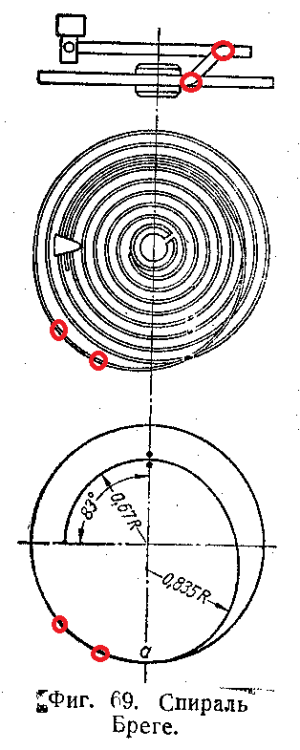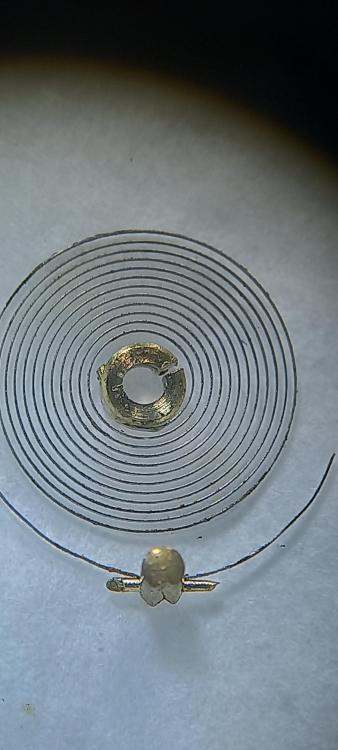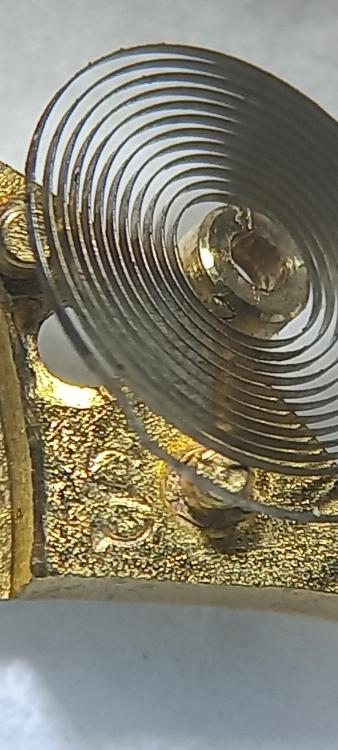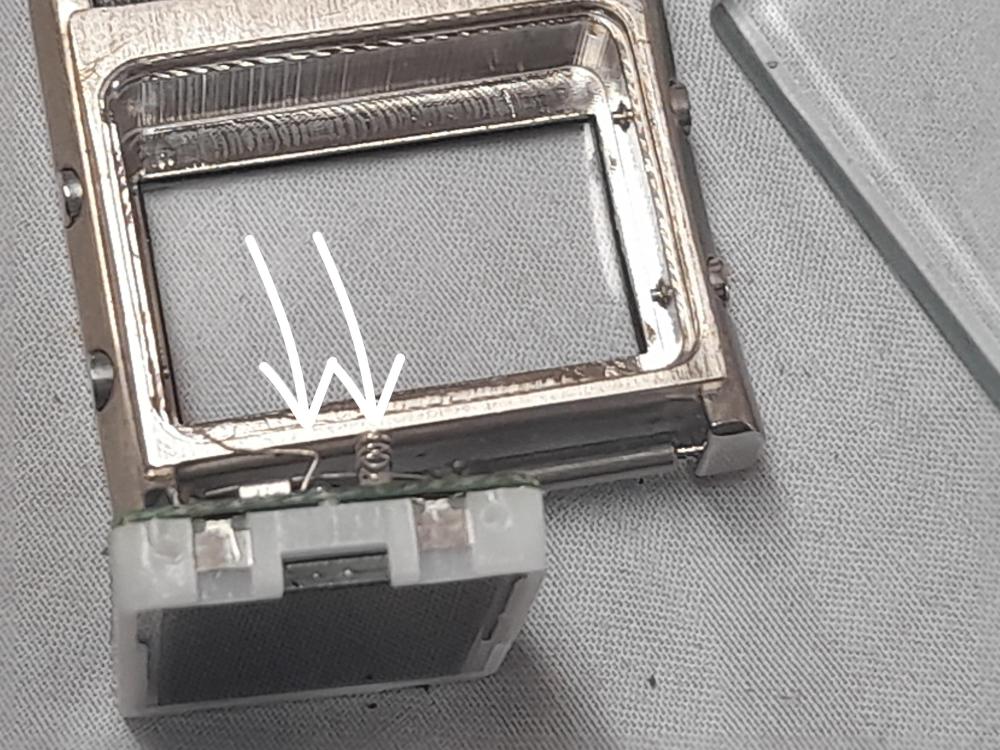Leaderboard
Popular Content
Showing content with the highest reputation on 05/06/24 in Posts
-
Here are the pics of the bridge. Looks correct, but as soon as I screw on the rotor, the watch stops. Video here: https://1drv.ms/v/s!ArG5E62RGctxjokY5ws85BzuJLVakA Pics. Might have figured it out. I have been working on this watch for a while and since I got it as a non runner in a terrible shape, there was no guarantee that parts were proper. I think the main screw that was used on the rotor was too long, so it was stopping the main train. As soon as I fished out a much shorter and larger headed screw, things were good again. Please celebrate with me.3 points
-
2 points
-
I just broke my Rule #1 - Do not buy a watch unless you can see a good pic of the movement. I currently don't have anything to work on (itchy fingers) and as I just got this for £20 from ebay, (sold as "working"), I thought it was worth the gamble. I liked the look of it, It has 21 jewels, so I'm assuming automatic. The back says "Incabloc" and "waterproof", so it looks to be reasonable quality. The case looks good. From the little I've found on google, the Credos Lugran company was formed in 1954., and bought by Bucherer in the 60s. This looks 50s-60s to me. There's a reference to using good quality ETA movements. I hope so.2 points
-
Hi all of you, I've just received a pocket watch without any brand name wich looks quite old, and the only information I could see on the movement is 7020. I haven't disassembled it yet, and I must admit I am a bit reluctant to do it as it seems old (but it works well). Could anyone help me? Here are some photos.1 point
-
1 point
-
Hi as said by @oldhippy it will need to be drilled out. Try usin£ a drill bit in a pin vice, it will be slow but doable. The other way is to drill from the out side of the lug a nd plug and polish when finished.1 point
-
Looks like it was part of the case. Old watch cases never had those spring bars. The only thing you can do is drill the holes so it will take spring bars.1 point
-
I can't wait to see. I'm hoping for something good. I just hope it's not one of those bleeping FHF 96, as in the Mumbai Specials1 point
-
I had two different tension ring tools one was screw down the other was press I liked the press better. Just to let you know how well my workshop was equipped I even had the Omega glass fitting tool and the Tissot.1 point
-
I can't say I've found it any better than naptha, why these chemicals specifically for hairsprings ? Just going slightly off topic, yesterday i was sorting out a very poorly balance assembly on a 90 year old AS554. All components of it in bad shape, first to deal with was a rusty hairspring. I did a write up a couple of years ago going through various kitchen items and their chemical make up in order of their aggressive nature on steel. The mildest being citric acid in particular lemon juice, so i thought i would try this first, anything stronger could eat through fragile thin steel very quickly. I used freshly squeezed juice heated on a wax melt heat plate to about 60° and soaked the hs for about 2 hours. Then lightly brushed and rinsed in IPA. The results were very good, the effects of the rust were still obvious but the iron oxide was completely removed. The pictures are the befores.1 point
-
1 point
-
What you can do is type it in say Microsoft Word use the spell check in that then cut and paste it here.1 point
-
Well, Geiger counter showed up today and the dial and/or hands were extremely radioactive, reading quickly spiked from a baseline of 10-20 cpm to 100 and was still rising when I removed it. Trashed the whole thing. Thankfully nothing else outside the components was registering - work surface, tools, the paper I had used to clean off some components.... And now I have a Geiger counter to use to check practice watches BEFORE disassembly1 point
-
So I checked with my friendly local lab supplier and they can supply the following in 2.5 lt bottles: Tetrachloroethylene (B-Dip) - approx £65 Trichloroethylene (one-dip) - approx £43 n-Heptane 99% (Essence of Renata) - approx £35 Hexane - approx £45 I can't import or buy locally the 'real' products, hence the raw chemicals above. What do you think would be my best option? I'm edging towards Trichloroethylene - I know there are greater health risks, but given the very small quantities used for each treatment and 99.99% of the time it will be sealed in a jar, I think any risk is vanishingly small? This is mainly due to its assumed superior cleaning properties, or from the experience of this group, is the extra cleaning noticeable compared to its safer alternatives?1 point
-
I'll be honest that benchtop all the way around was something I really wanted to do. At the moment, it is not a possibility due to some upcoming expenditure that Liz and I have to go through. I already had these benches, so that will have to do for now. I'll work the rest out somehow. Hey, it took me 4 years to get to this. What's another couple of months?1 point
-
1 point
-
Casio MDV106G-1AV Gold DURO200 I'm going on a long family vacation to Southeast Asia this summer and wanted a cheap but reliable beater in case I lose it, break it, or get robbed. Quartz movements aren't my thing, but I'm not dogmatic and this was a cheap option. A few years ago you could buy it for under $50, but since this particular model with the Marlin fish has been discontinued, you have to pay about double that, but I still thought it was acceptable. Sure, I could wear one of my cheap and very reliable Vostok Amphibian divers watches, but I have a personal relationship with them (having put a lot of work into them) and don't want to risk losing them. Strangely, I feel very excited. Maybe because I haven't bought a brand-new watch in over 10 years! The only downside is that this is the watch Bill Gates has been seen wearing, and I'm not exactly a fanboy of Bill Gates. Anyway, who cares!?1 point
-
Not to state the obvious, but buy a demagnetiser! If the hairspring is sticking together then this will increase the timing rate. If you demagnetise the movement, at least it takes the problem of being magnetised off the table and being the possible problem and you have a way of demagnetising any other watch you service. This may not be the problem, but watchmaking is all about eliminating everything that couldn't be the problem and ending up with the possible, then the probable.1 point
-
I usually just give everything a good brush down first to remove debris, i like to do any repairs first it saves a lot of time having to re-clean . Not sure about a practice piece maybe? it has so many what look like old poor repairs. Up to now, broken setting lever, set mainspring, two cracked plate jewels, chipped pallet fork cock jewel, chipped pallet stones, rusty hairspring, heavily modified balance wheel,and deformed staff. The jewels are rubbed in and the staff just snapped taking the roller off.0 points



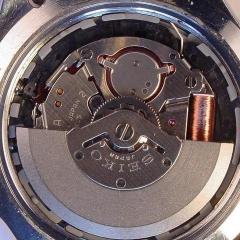

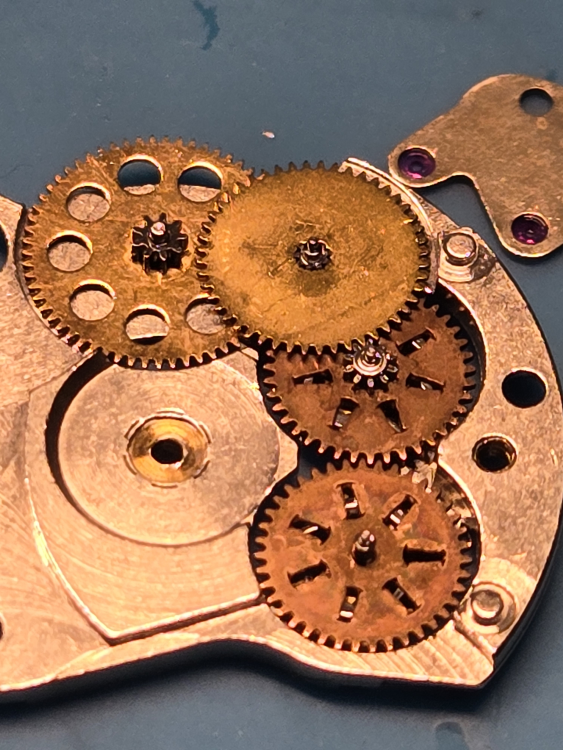

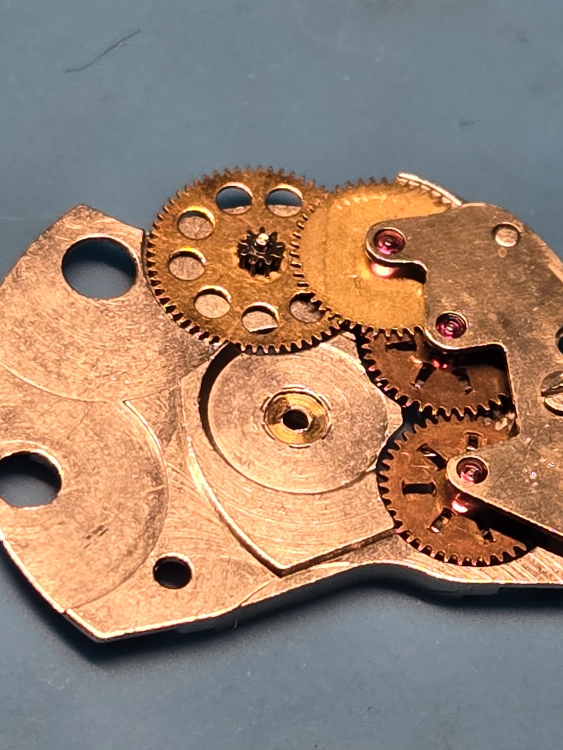
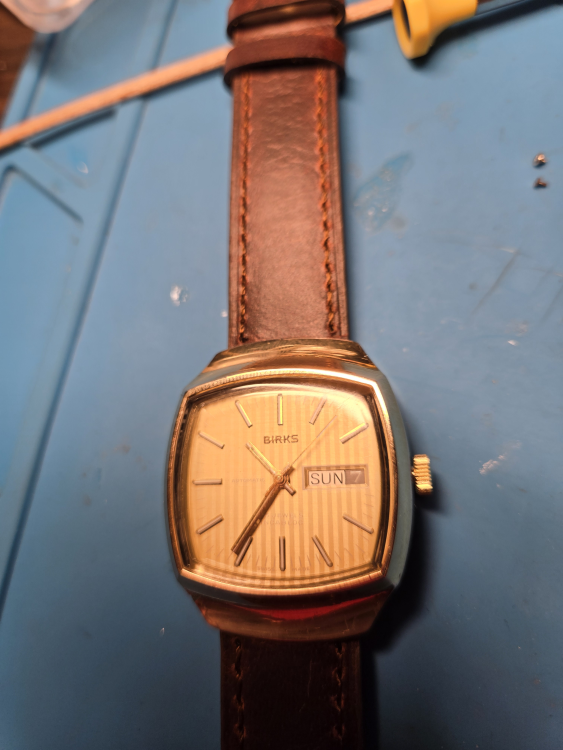
.thumb.jpg.9866cbbdef6ffd6914009ed07715a377.jpg)
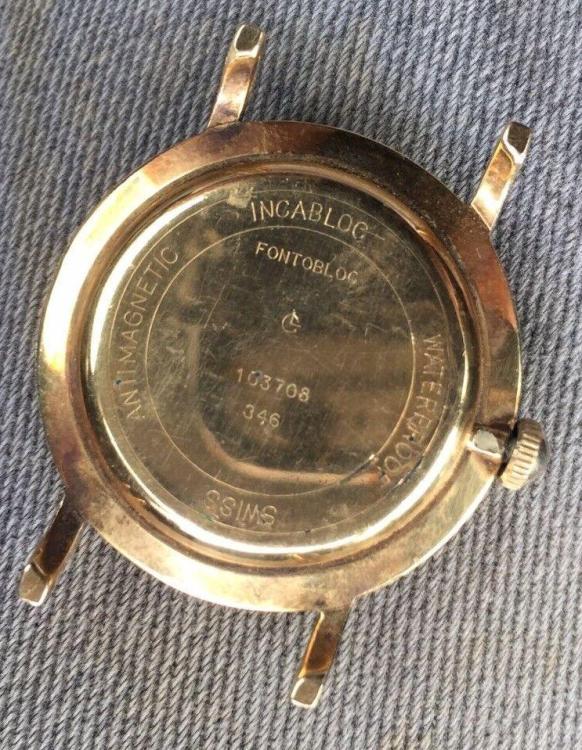

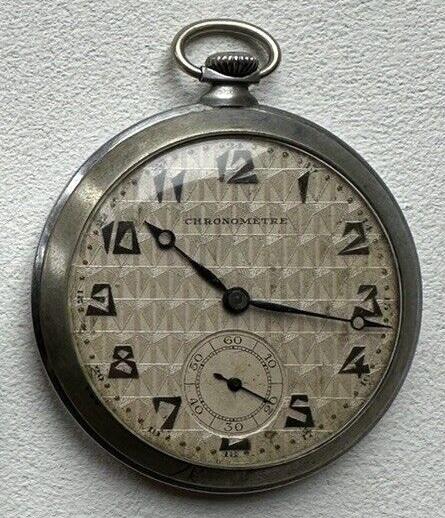
.thumb.jpg.2b2f8848a3a25d27fa11eb63f4741c8c.jpg)
.jpg.02bf53ca4200e47cd4f1dd09babaaf92.jpg)
